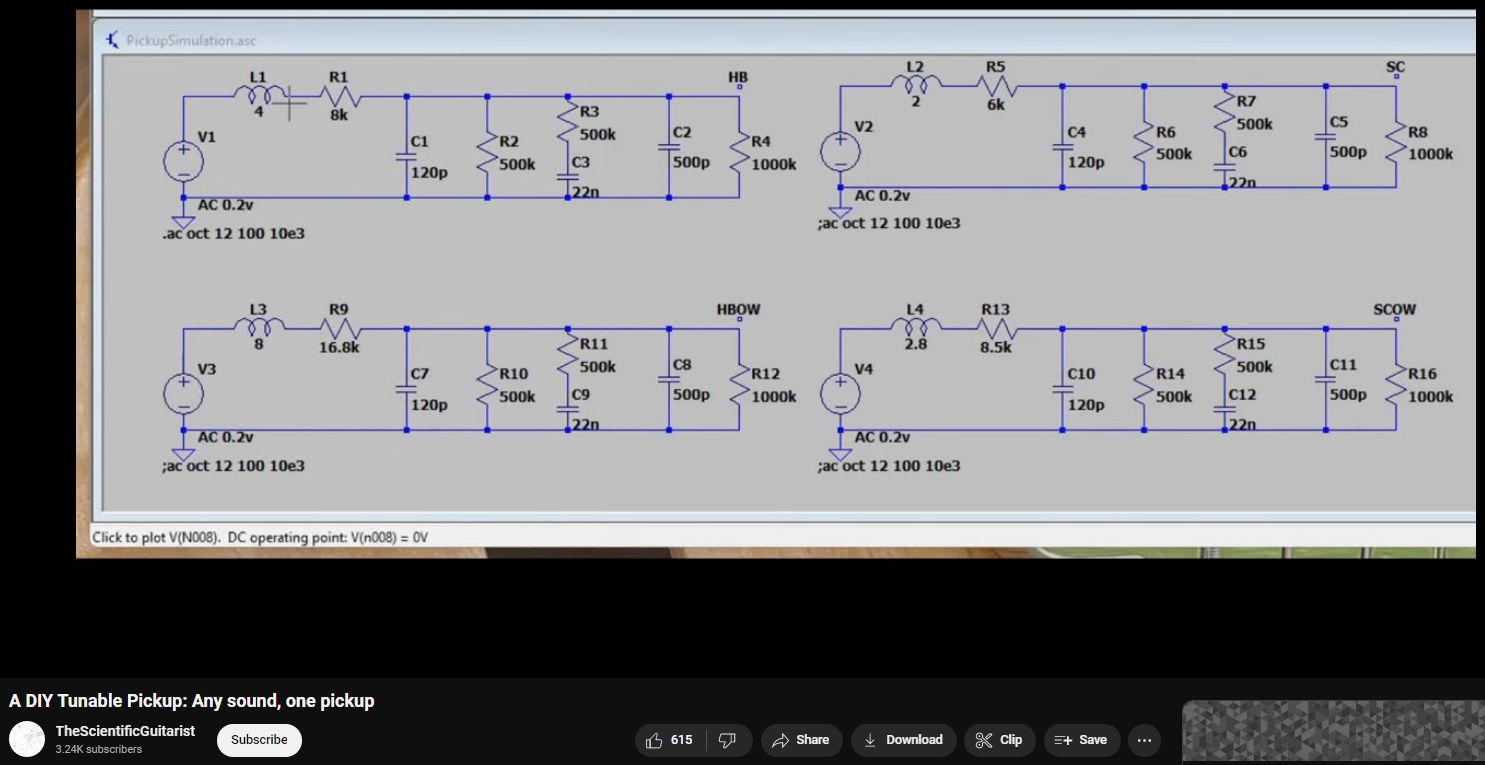DIY Tunable Pickup
A guitar pickup is a device used to capture the sound of vibrating guitar strings and convert it into an electrical signal that can be amplified and heard through a guitar amplifier or recording equipment. Pickups are an essential component of electric and electric-acoustic guitars, as they play a crucial role in shaping the instrument’s tone and sound.
Here are the key components and functions of a guitar pickup:
1. Coil of Wire: The primary component of a guitar pickup is a coil of wire wound around a magnet or magnets. When the guitar strings vibrate above the pickup, they create a magnetic field that induces a small electrical current in the coil of wire.
2. Magnet: The magnet(s) inside the pickup creates a magnetic field that interacts with the magnetic properties of the guitar strings. This interaction causes the strings to generate an electrical current in the coil of wire as they vibrate.
3. Pole Pieces: Many pickups have individual magnetic pole pieces located beneath each string. These pole pieces help to focus the magnetic field and capture the vibrations of each individual string more accurately.
4. Output Leads: The electrical signal generated by the pickup is carried through output leads, typically connected to the guitar’s output jack. From there, the signal can be routed to an amplifier or other audio equipment for further processing and amplification.
Guitar pickups come in several different types, each with its own unique characteristics and tonal qualities. The most common types of guitar pickups include:
– Single-Coil Pickups: These pickups consist of a single coil of wire wrapped around magnets. Single-coil pickups are known for their bright, clear sound and distinctive “twang.” They are commonly found on guitars such as Fender Stratocasters and Telecasters.
– Humbucker Pickups: Humbucker pickups consist of two coils of wire wound in opposite directions and connected in series. They are designed to cancel out hum and noise, resulting in a smoother, warmer tone compared to single-coil pickups. Humbuckers are often associated with guitars such as Gibson Les Pauls and SGs.
– P-90 Pickups: P-90 pickups are a type of single-coil pickup with larger, wider coils and a higher output compared to traditional single-coil pickups. They offer a unique blend of clarity, warmth, and midrange punch, making them popular among players seeking a versatile tone.
– Piezo Pickups: Piezo pickups are often used in acoustic-electric guitars and produce a signal by detecting the vibrations of the guitar’s bridge or saddle. They offer a natural, acoustic-like sound and are commonly used for amplifying acoustic instruments onstage.
Overall, the type of pickup used in a guitar can have a significant impact on its tone, feel, and playability. Guitarists often experiment with different pickups to achieve their desired sound and expressiveness.
Cleanest pickup — start with flat, then modify electronically.


Response of the pickup looks like a resonant low-pass filter.
See also // In-depth videos on pickup construction (watch BOTH):

This is excellent.